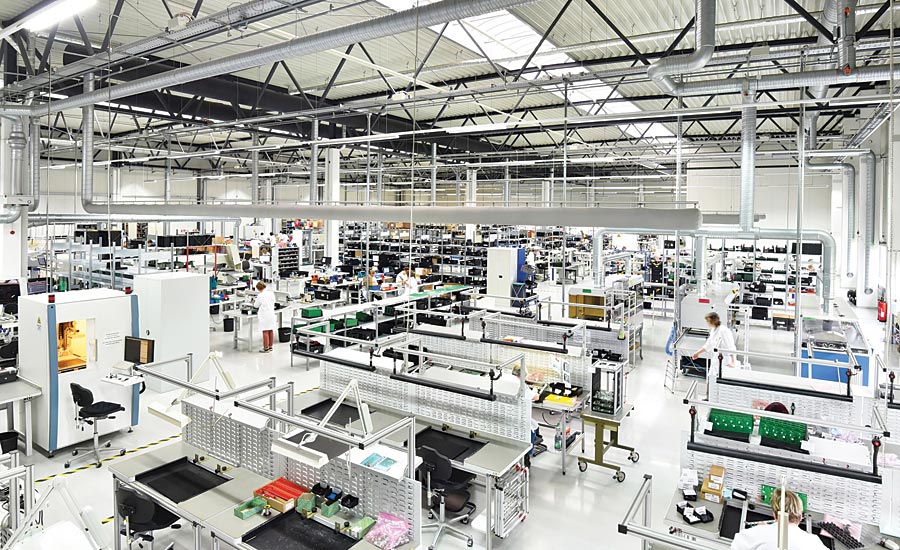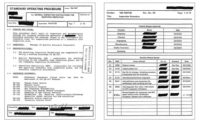Are you using 5S?
“It may sound like an older version of the iPhone,” writes Dean Marsman in Quality, “but it’s actually a very simple and helpful system that can make the fundamentals of lean manufacturing even clearer to both business owners and employees.”
ASQ explains it as a tool to build a better quality work environment. For Paul Critchley, president of New England Lean Consulting, it’s often a good introduction to lean. For Krush Patwari and Katie Lister of ZOLL® Medical Corp., it’s proven helpful in manufacturing as well as the back office. And Mark Nash, president of Pinnacle Partners West, says 5S can make or break a company.
Based on a Japanese concept, 5S translates to sort, straighten or set in order, shine or sweep, standardize, and sustain. This tool—and lean in general—is far from being the next new thing. But if you’re not utilizing it in your operations, it is worth looking into. While 5S is often associated with cleaning and organizing, this technique goes way beyond housekeeping.
According to ASQ, “5S is defined as a methodology that results in a workplace that is clean, uncluttered, safe, and well organized to help reduce waste and optimize productivity. It’s designed to help build a quality work environment, both physically and mentally. The 5S philosophy applies in any work area suited for visual control and lean production. The 5S condition of a work area is critical to employees and is the basis of customers’ first impressions.”
Consider how much more effective you are when everything is in place before you begin. Even schoolchildren are taught to gather their books, notes and calculator before sitting down to tackle those math problems. And 5S works the same way. Once the tools are in place it’s easier to be successful.
“People like to talk about how busy they are, but it’s not value added work,” Critchley says. “5S visual management stuff gives you that time back.”
Why 5S
This technique has been used for the past several years at ZOLL Medical Corp. in Chelmsford, MA. Empowering people is his favorite aspect of lean, says Krush Patwari, who’s spent 15 years working with lean.
“The things I like the most about lean in general is the cultural piece,” Patwari says. “Everyone feels empowered to make changes. A lot of time you get that aha moment.” People are happier to work in an organized space, rather than surrounded by chaos. Whether it’s on the shop floor or in your kitchen, having a clean and organized environment helps you be more effective. Indeed, having forks, knives and spoons placed in a kitchen drawer is a perfect example of 5S in the household, he says.
“The biggest benefit that I’ve seen is not tangible,” Patwari says. “It’s just the feeling of ownership and pride that people take in their work environment.”
Katie Lister, operational excellence leader at ZOLL, says that lean has permeated many aspects of the company, not just manufacturing. For example, the help desk has used 5S to organize a lab area they use to replicate questions on specific products that a customer may be calling about. “What it all comes down to is you have what you need, when you need it, where you need it,” Lister says.
Patwari recalls a 5S event in the service depot area for debugging devices. It was taking a significant amount of time to find the right tools. The solution? They created shadow boards so now if a tool is missing, it’s clear right away.
Another 5S application was with items that needed to be calibrated. In an FDA regulated environment, calibration is critical. They began assigning a location for all calibrated items, which saved time in finding the items.
As part of the lean system training, they do boot camps for the teams closest to the process. It includes a hands-on exercise, with two hours of training and four to six hours of application. Being able to work directly on an exercise makes it easier to apply it. They will also go talk to others who have done 5S at the company. Patwari recommends involving as many functions and people as necessary, such as a calibration supervisor along with an engineer. This allows for different perspectives and also creates a common understanding between functions, he notes.
Organize with 5S
For those looking to incorporate 5S into their work, Patwari offers this advice. “What I found effective, in an environment where someone might not be familiar with 5S, say, ‘we’re going to organize the workplace using 5S,’ rather than saying ‘we’re going to 5S a process or department.’ Talk about the benefits more. There’s more power in that. Say ‘Reduce defects by implementing 5S.’”
In addition, he suggests training and engaging people closest to the processes as well as leadership. “Start slow, pilot it, get good in one area, get wins, then start expanding what you do in 5S.”
“The other tip is ensuring there are plans in place to sustain it,” Patwari says. He likes to post pictures of the target condition, or the 5S “after” photo, as a way to keep moving toward the goal.
Recognition is also important, he says. ZOLL typically celebrates with an event over lunch to thank the team and recognize their work. The next step is to ask “What do you want to do next?” and empower the team to go do it.
Sometimes the solution may seem silly but still makes a world of difference. Paul Critchley recalls a recent 5S event he did with a manufacturer in Connecticut. Machines were gear-driven, and the gears were stacked and placed on a cart without any semblance of order. Not only that, the gears were covered in an oily dust and grime. There were a variety of sizes so selecting the right gear resulted in frustration and extended setup time. The simple solution was cleaning the gears and building a heavy-duty peg board to hold them. And lo and behold, after they cleaned the gears, they found they were actually color coded.
Sustain, Sustain, Sustain
Mark Nash says every company that he’s ever worked with on lean has used 5S. In his almost twenty years of lean experience, Nash says he’s learned “the hardest part of 5S is the last S, sustain. People shouldn’t get discouraged if they can’t sustain the 5S initiative.” It may go well for six months, but then when high season hits, the company will let it slide. Perhaps it takes a few tries to get it to stick.
Nash says the biggest mistake with 5S is overregulating. He’s seen companies that start punishing people for doing it correctly. One company did 5S on the manufacturing floor and brought it into the office tried to regulate what people could have on their desks—no personal photos, for example. Nash describes this as “incredibly counterproductive” and says this punitive environment just turns people against 5S and lean in general.
While lean is not just about tools like 5S, this is often a good place to start. Having a clean and organized workspace just makes life easier. Clutter will get you nowhere.
Patwari offers a cell phone analogy. If you don’t have one, you don’t miss it. But once you have one and then it’s lost, you would notice it. In the same way, “If you have an unorganized workplace, you deal with it. Once it’s organized, you don’t want to go back. This is the standard, this is the way going forward.”







